The places we protect for nature must be connected
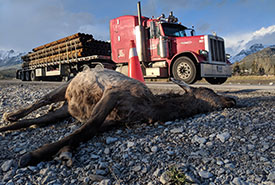
An elk killed by a vehicle in Alberta's Bow Valley. (Photo by Kelly Zenkewich, Yellowstone to Yukon)
Written by Dan Kraus, Wildlife Conservation Society Canada, Karen F. Beazley, Dalhousie University, Jodi Hilty, Yellowstone to Yukon Conservation Initiative, Christopher J. Lemieux, Wilfrid Laurier University and Pam Wright, University of Northern...
Why nature in Canada’s cities could change conservation forever
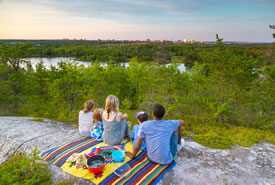
Colpitt Lake in the Shaw Wilderness Park (Photo by Adam Cornick, Acorn Art & Photography)
When the Nature Conservancy of Canada (NCC) was founded almost 60 years ago, there was growing recognition that unmanaged urban expansion was threatening nature. In fact, our first project was to try to save a section of Rattray Marsh along the...
Environment week 2021: Species we have saved
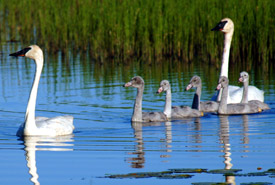
Trumpeter swan family (Photo by Karol Dabbs)
For many of us, wildlife is the symbol of nature conservation. This isn’t surprising; humans have lived closely with other living things for most of our history. We knew the names and habits of animals, and we held knowledge of the plants...
By conserving and restoring nature’s foundation we can build a more prosperous future for Canada
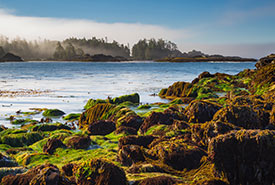
Low tide kelp forest (Photo by Mark Smith, Flickr)
We are coming to the end of an era in human history. For much of our human existence, nature has been in abundance. While even early humans were able to deplete natural resources locally, and some past civilizations collapsed as a result, we have...
A new relationship to wildlife is needed for nature and people
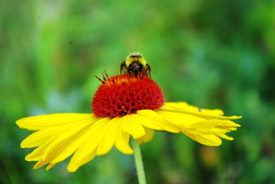
Bee on flower (Photo by NCC)
COVID-19 has brought us unprecedented health and economic challenges. It will test the resolve and resiliency of each Canadian and our nation. Crises have a way of unveiling truths, flaws and misconceptions in any society. Our immediate crisis is...
Nature-based solutions for an uncertain future
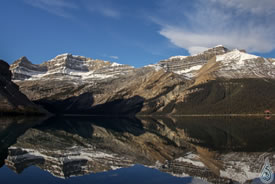
Bow Lake, AB (Photo by Sarah Boon)
Here in Canada, it’s a luxury to not think about water. Most of us watch it come out of the tap and go down the drain without considering its source or destination. But many people in the world don’t have taps or drains. In fact, over...
What will we save? The conservation decisions we make today will impact Canada’s wildlife forever
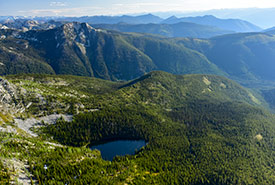
Next Creek alpine lake (Photo by Steve Ogle)
Nature conservation often means making tough decisions. The conservation that does, or doesn’t, happen today will have a big impact on the future of wildlife here in Canada and beyond. Canada is a large and vast country, and we are one of...
Wanting wetlands: Marking 50 years of wetland conservation and loss
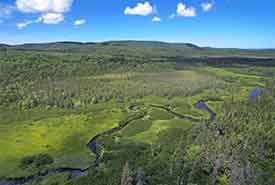
Black River Bog, NS (Photo by Mike Dembeck)
Fifty years ago, nations gathered to create the world’s first global agreement to conserve a habitat. Maybe it will surprise you that this agreement wasn’t for tropical rainforests or coral reefs or oceans. It was a for a habitat that...
2020 may just have been Canada’s most important year for nature conservation
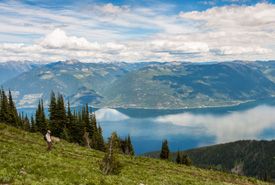
Hiking on Darkwoods, BC (Photo by Gordon MacPherson)
A year ago, there was much anticipation in the conservation community that 2020 would perhaps be the most important year ever for nature. Canada’s Nature Fund promised to accelerate the conservation of our wild spaces and species. There was...
The plants we leave behind
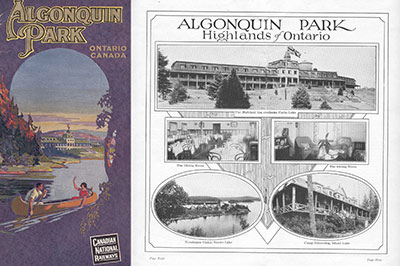
1925 Canadian National Railways Algonquin Park pamphlet showing painting of Highland Inn on cover, with centerfold photographs of Highland Inn, Nominigan Camp and Camp Minnesing (Public Domain)
Nominigan Camp in Ontario’s Algonquin Park was built along the shore of Smoke Lake in 1913. During its peak, the log cabins and main lodge could host almost 100 guests. It later became a private residence and was abandoned and dismantled...

